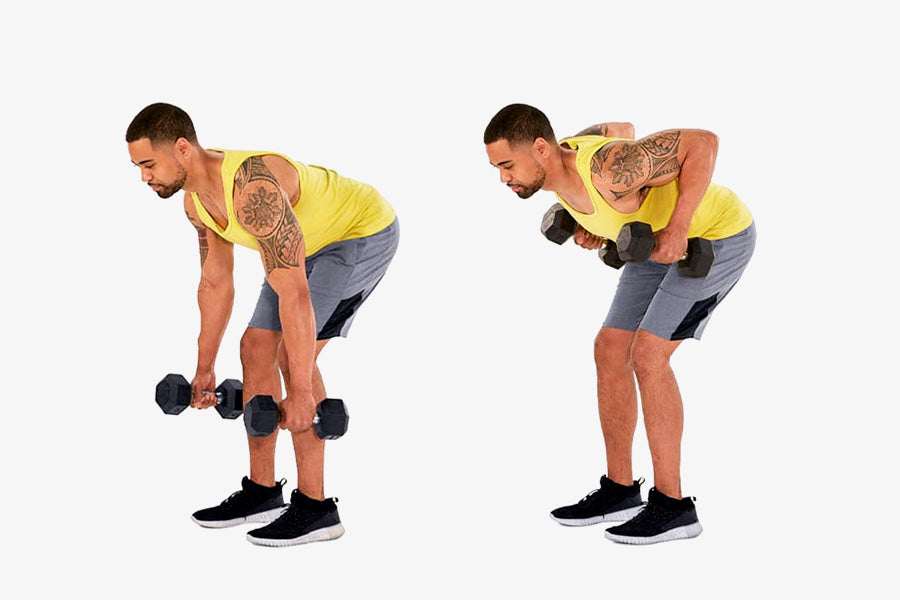|
Exercise Description |
|
|
Main Target Muscles |
Upper Back |
|
Secondary Target Muscles |
Biceps, Lats, Lower Back, Shoulders Abs, Traps |
|
Workout Type |
Strength |
|
Gym Gear |
Dumbbell |
|
Fitness Level |
Beginner |
|
Compound/Isolated |
Compound |
|
Power Move |
Pull |
Target Muscle Group: Upper Back

Overview of Bent-Over Dumbbell Row
The dumbbell row, a variation on the barbell bent-over row which is an exercise that builds muscle and strength. You can vary the position of your back muscles. To maximize the growth of your back muscles, try different angles and hand positions.
You can perform the dumbbell row during your back exercises, upper-body workouts, pull workouts, and full-body workouts.
How To Do It?
- Stand while maintaining a neutral grip on the dumbbells in your hands.
- Keep your head up until your torso is parallel to the floor or slightly higher.
- Let the dumbbells hang at arm's length, keeping your shoulder blades squeezed together and your core engaged.
- From here, bend your elbows and row the dumbbells up to your sides, leading with your elbows.
- Squeeze your shoulder blades together at the top of the movement, then lower the dumbbells back down to the starting position.
- Continue repeating until you reach the desired number.
Exercise Tips
- Try different head positions to find the one that works best for you.
- To avoid arching your spine, keep your abdominals toned as you pull the dumbbells in your body.
- Do not allow momentum to dictate your movements. Instead, control dumbbells for the entire rep.
- A false grip is a technique that allows you to hold the dumbbell in your hand while you are bending your back. Do not wrap your thumb around the dumbbell.
- Do not allow your head to protrude forward when you pull.
- Also, make sure the shoulder blade is free to move on the rib cage. Do not lock your shoulder blade. Instead, move it through the glenohumeral joint.









